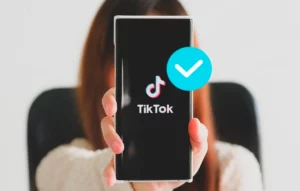
“A good advertisement is one which sells the product without drawing attention to itself.” – David Ogilvy
That’s what we call “marketing” today. Because advertising is obvious for what it is.
If you want to emulate Ogilvy, you need to understand what marketing means in its simplest, most fundamental form.
Marketing encompasses advertising, selling, and delivering products to either other businesses (B2B) or customers (B2C). It consists of identifying and attracting target customers to generate more leads and conversions.
Marketing employs the strategy of marketing mix comprising the Four Ps – Product, Price, Place, and Promotion.
Since the inception of online shopping in the early 2000s, the concept of marketing has become broader and more complex. According to expert estimates, the increase of online sales is expected to generate $735 billion by 2023 in the U.S. alone.
There are hundreds of marketing terms that marketers come across every day that are easy to interpret and misinterpret in different ways.
Hence, we’ve rounded up a list of marketing terms that you should be aware of. We’ve broken this article into six sections for your reference.
- Basic Industry Terms You Should Know
- Marketing Acronyms to Know
- Marketing Buzzwords You Need to Know
- Relevant Marketing Terms to Know
- Terms for Types of Marketing
- Terms to Watch in the Future
Basic Industry Terms You Should Know
1. Brand Identity
Brand identity is the precursor to your brand’s positioning and personality. It helps your customers recognize your brand and differentiate it from those of your competitors online or offline.
While brands are represented by distinctive visual design, trademarks, logos, colors, and jingles on different channels, the “identity” itself is similar to its human counterpart – it lies in the name of the brand.
You need to come up with a brand name that not only suits your business, but also goes well with your product range, store, startup, website or blog.
Ultimately, your brand identity is not just the voice of your company. It is what sets you apart from the hordes of nameless products out there that live and die by price.
2. Customer Satisfaction
Can you measure a customer’s happiness? Well, that is what customer satisfaction means.
It expresses how happy a customer is with a company’s product, service, and other offerings. It is measured via customer surveys and ratings.
3. Demand Generation
Demand generation is all about running marketing campaigns to create product or service awareness and consequently generating demand for it.
This basic marketing term is based upon a data-driven approach. Its components include building awareness about your product/service, establishing positioning relevance, and mitigating customer evaluation.
4. Revenue Performance Management
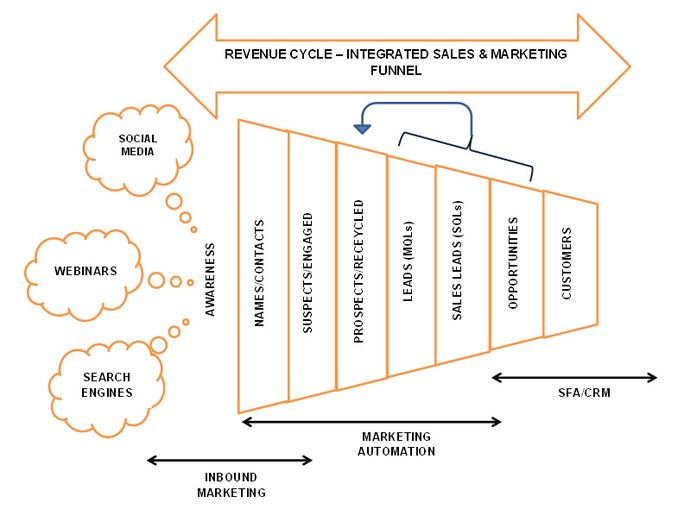
RPM is a process of measuring the revenue generated by the business alongside recognizing the key places where customer interactions can be improved.
It ensures that acquisition, retention, and expansion are in alignment to provide maximum profit to the business.
5. Tech Stack (software stack)
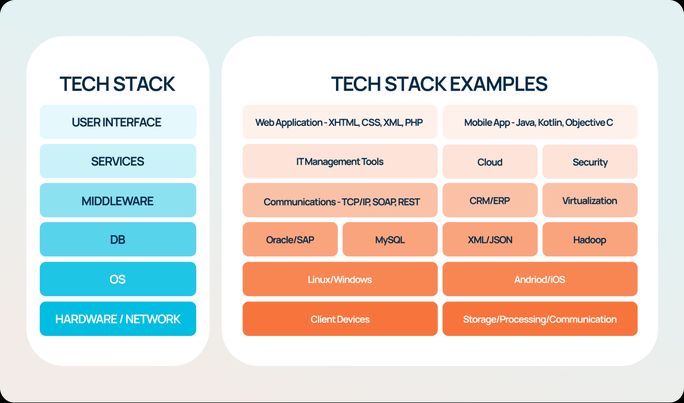
Though not a basic marketing term, a tech stack is defined as a combination of technologies or an amalgamation of programming languages, frameworks, databases, front-end and back-end tools, and APIs (Application Programming Interfaces).
Programmers and IT companies use software tech stacks to develop web apps and mobile-based apps.
Examples include MEAN (MongoDB, Express.js, Angular.js, and NodeJS), LAMP (Linux, Apache, MYSQL, and PHP), etc.
6. Responsive Design
How well a website is able to adjust to the screen size of the viewer’s device refers to what is known as the responsive design of the site.
This way, one can ensure that the business website gets visits from any type of device and hence pulls significant traffic and generates leads.
7. Paid Search
Paid Search is another digital marketing term that refers to a marketing strategy used by online marketers to pay search engines to place and run their ads on the Search Engine Results Page for a specific period of time.
Most of the ads are based on the pay-per-click (PPC) model. As per Small Biz Genius, paid ads offer an ROI rate of 200%.
8. Keyword Research
Keyword research forms the backbone of most SEO and paid search campaigns. It deciphers the language that your target audience is using to search for something specific on the search engines.
As per AHREFS, 92.42% of keywords get an average of 10 monthly searches. Keywords are essential because if nobody is searching for what you are writing, then it is difficult to get traffic from search engines.
9. Customer Retention
It expresses how many customers return to a particular brand for the quality of service or product. Research indicates that only 18% of businesses concentrate on customer retention while 44% of businesses focus on customer acquisition.
Some factors impacting customer retention are customer support, customer success, and customer experience.
Customer retention rate measures the number of customers retained over a certain period of time by a brand.
Marketing Acronyms to Know
10. CAC: Customer Acquisition Cost
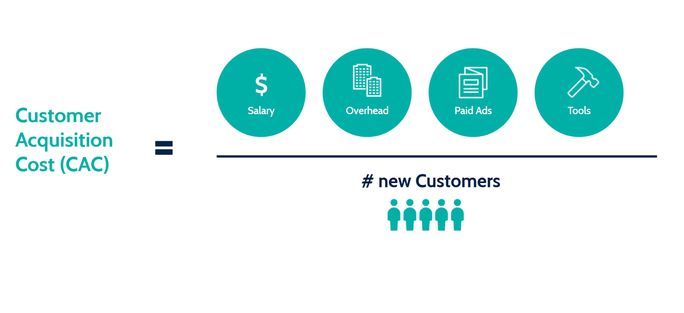
Customer acquisition cost is the amount of money shelled out by brands to acquire new customers who purchase their product or service.
CAC is associated with customer lifetime value (CLV or LTV). A good CAC value should be 1/3 to 1/5 of LTV.
11. CPL: Cost per Lead

Also known as online lead generation, this digital marketing term represents the amount that an advertiser spends for gaining a unique sign-up from a new consumer.
Cost per lead is a part of performance-based advertising, which measures the effectiveness of online marketing campaigns.
CPL = Total marketing expenditure / Total number of new leads
12. KPI: Key Performance Indicator
A key performance indicator is a quantifiable indicator that helps to measure a company’s performance with respect to the key business objectives.
Generally, the five most commonly used KPIs are revenue growth, revenue per client, profit margin, client retention rate, and customer satisfaction.
13. CLV: Customer Lifetime Value
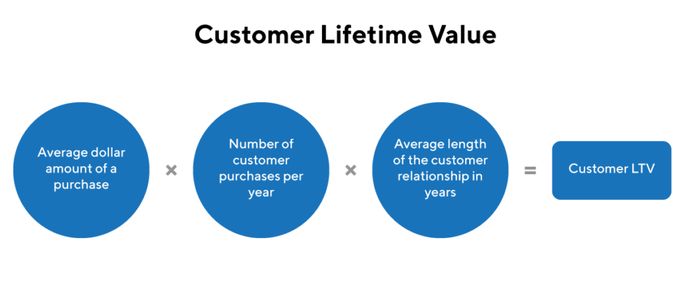
Customer lifetime value is expressed as the product of customer value and the average lifespan of a customer.
It expresses how valuable a customer is to a business group within an unlimited period. It also helps to measure the value of cost per acquisition.
14. NPS: Net Promoter Score
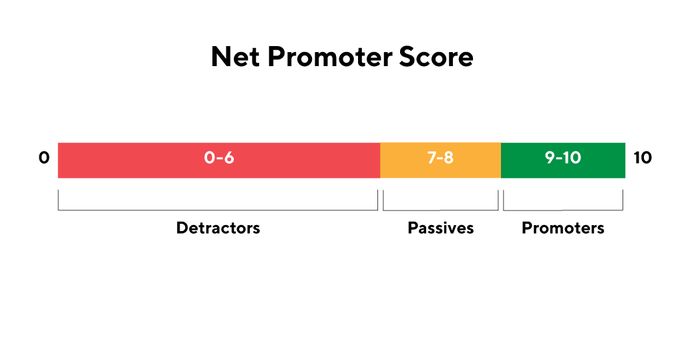
Net promoter score indicates customer loyalty and customer satisfaction. NPS is the opposite of the churn rate.
After conducting a general survey of your brand, you can calculate the NPS score by subtracting the percentage of promoters from the detractors.
15. CRM: Customer Relationship Management
Customer Relationship Management software is a sales acceleration tool that can generate analytics reports to provide better business insights.
CRM can retain a lot of customer-related data, including their names, phone numbers, emails, etc. This data can be leveraged by businesses in various ways.
16. CMS: Content Management System
Content Management System lets marketers create, design, host, edit, manage and monitor the performance of their website content.
A CMS consists of two chief components: a content management application (CMA) and a content delivery application (CDA).
17. MVP: Minimum Viable Product
Designing an MVP is part of a development technique where product developers introduce a product in the market with minimal features.
Doing this can save a lot of expenditure for the business as it can help identify customer expectations and design flaws before products manufactured in bulk hit the market.
18. TAM: Total Addressable Market
The total addressable market reflects the amount of revenue your business would be generating had it been hypothetically possible to sell your product/service to all potential customers.
Understanding this is essential in knowing what strategies could be employed to attract more and more customers.
19. CRO: Conversion Rate Optimization
CRO refers to the systematic increase in the conversion rate by following certain strategies. For this, key metrics are identified to understand how the customers interact with the site and their preferences while doing so.
Marketing Buzzwords You Need to Know
20. Contextual Marketing
This key marketing term refers to a group of strategies and tactics employed by companies to create targeted ads for specific customers using data.
Customer marketing focuses on the entire context of user behaviour and their buying patterns. Through this marketers can increase their conversion rates by targeting the right audience at the right time.
21. Immersive Marketing
Mostly, marketing uses the two dimensions, be it social media ads on our screen or banner ads on a website – all of it happens in 2-D. But, immersive marketing adds everything in the third dimension.
It is a whole different world for your audience where they can interact with your brand and experience a different space that you create for them.
22. Word-of-Mouth Marketing (WOM)
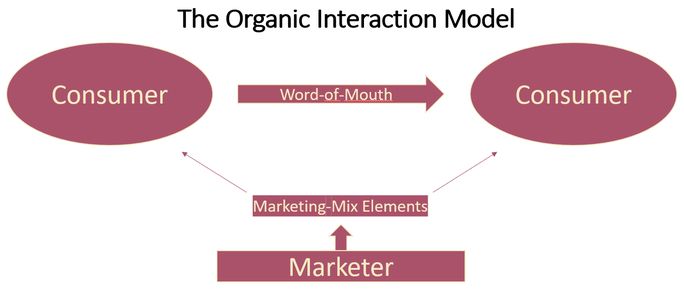
Here, social influencers create awareness about a service or product by spreading good words about it, citing how well they have benefitted from a particular product/service.
A popular example of using a WOM marketing tactic is that of Netflix, where their organic tagline “Netflix and chill” was popularized among people by other Netflix users.
23. Conversational Marketing
This form of marketing refers to the communicative aspect of marketing with the consumers. It includes conversations conducted through live chats, chatbots, voice assistants, and in-person communications.
AI-driven chatbots deserve special mention here, because they’ve helped businesses up their prospecting, conversion and customer service games in recent years.
Marketers can meet customers at every stage of their journey and influence (if not control) the conversation with relevant information delivered at the right times.
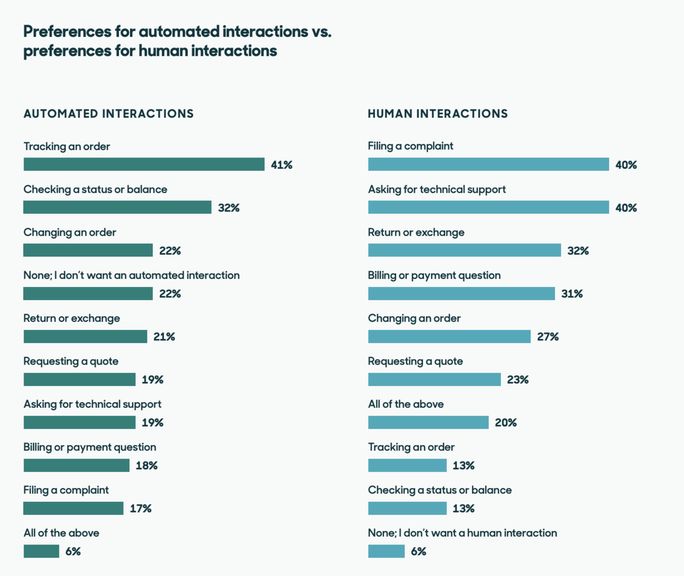
Like with everything else, there is a fine balance between automation and human interaction in brand-consumer conversations.
Conversational marketing is an effective strategy to achieve conversions quickly by encouraging consumers to communicate and build strong relationships.
24. Earned Media
This is yet another term for free promotion including backlinks, shares, ads, etc. earned through your marketing efforts. Earned media basically is any organic content that you create and gets popular without you putting any further investment.
25. Local Marketing or Hyperlocal
When it comes to Hyperlocal it essentially means targeting an audience in a specific location. It could be a city, town or a particular area. Searches like restaurants near me are an example of local marketing searches.
You can set up your Google My business account to make the most of local marketing and be discovered by people. Customer reviews can also help your business a lot here which also improves engagement.
26. Digital Customer Experience (DCX)
An amalgamation of digital marketing and customer experience (or satisfaction), this is a user-centric approach that goes beyond just providing customer support.
It involves proactively monitoring the digital customer experience by focusing on the interactions and their results at every point in the customer journey.
To go deeper, this means that the service level quality of the website, mobile app, or other online content assets of the company is measured across three dimensions:
- Availability: Is it up and running?
- Functionality: Is it usable for its primary purpose?
- Speed: Does it improve users’ productivity?
Together, these are the building blocks of what we call “user experience” or UX.
Relevant Marketing Terms to Know
27. Buyer Persona
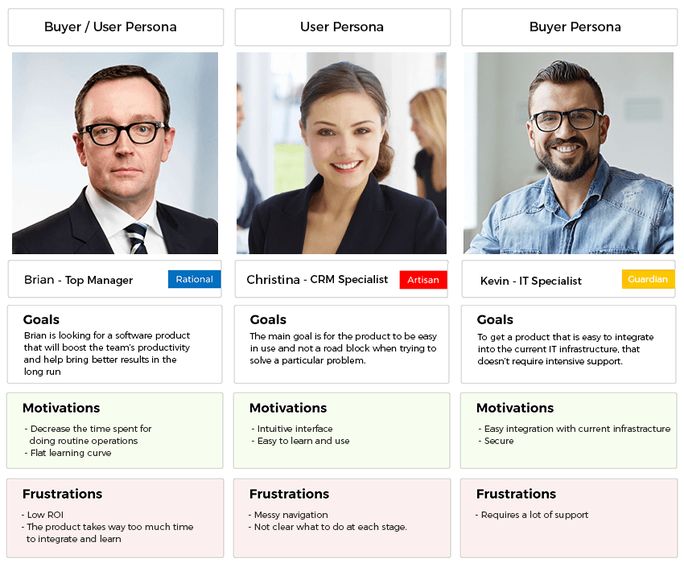
This is again a self-explanatory term that refers to the detailed personality description of the target audience.
Though not referring to a real person, the buyer persona represents a lot about potential customers’ demographic information, behavioral traits, psychology, and shopping interests.
28. Ideal Customer Profile (ICP)
This is the type of customer who meets all criteria of a prospective client. This is a hypothetical situation that shows how much a company can gain from the most successful sales cycle.
ICP helps businesses to figure out who to target exactly. It helps to iterate the buyer personas properly.
29. Sales Enablement
This marketing term talks about a sequential process of offering the requisite resources to the sales team so that they can utilize them to increase revenue.
These resources consist of content marketing tools and adequate information about the products and services that need to be sold in the market.
30. Services Operations
The combined working of professional service teams, customer success, and customer support teams along with customer experience teams is what is known as services operations.
Its goal is to support the various teams to drive the customer forward. It is inclusive of CRMs, running automated campaigns, product usage, ticket management, and customer feedback.
31. Churn Rate
The churn rate is the opposite of customer retention. It represents the number of customers who stop using a product or service or exit within a specific period.
It can be calculated by dividing the number of customers lost in a period by the total number of customers acquired by the business at the beginning of that period.
32. Top of the funnel (ToFu)
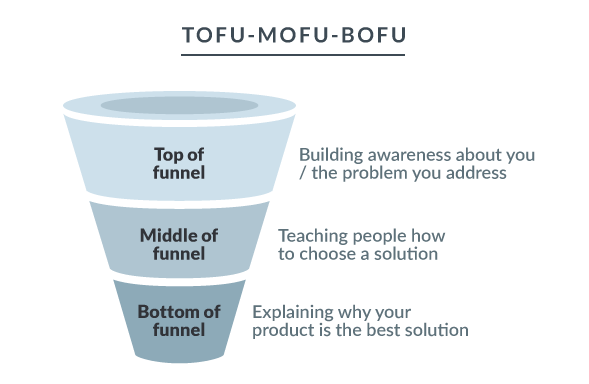
This sales funnel is a key marketing term used to represent the steps of the buying process that potential customers traverse while buying a product/service.
The top of the funnel is inclusive of the preliminary stages where buyers acquire information about a product. This includes performing activities like subscribing to a blog, visiting and browsing through eCommerce websites, etc.
33. Middle of the funnel (MoFu)
The middle of the funnel includes the middle of the purchase process. This is the stage where lead generation becomes the responsibility more of the sales than the marketing team.
Here, customers are busy gathering more valuable information about the product/service. Hence, this is the decision-making stage for the buyer and the convincing step for the seller.
Businesses can use conversational marketing strategy with the buyer to buy their confidence for the product/service at this stage.
34. Bottom of the funnel (BoFu)
This is the final stage where a buyer is ready to make the purchase. This is the most important step in the buying process.
So, in this step, they may be performing activities like requesting a demo or enquiring about the best price from the sales representative.
35. Product Qualified Lead (PQL)
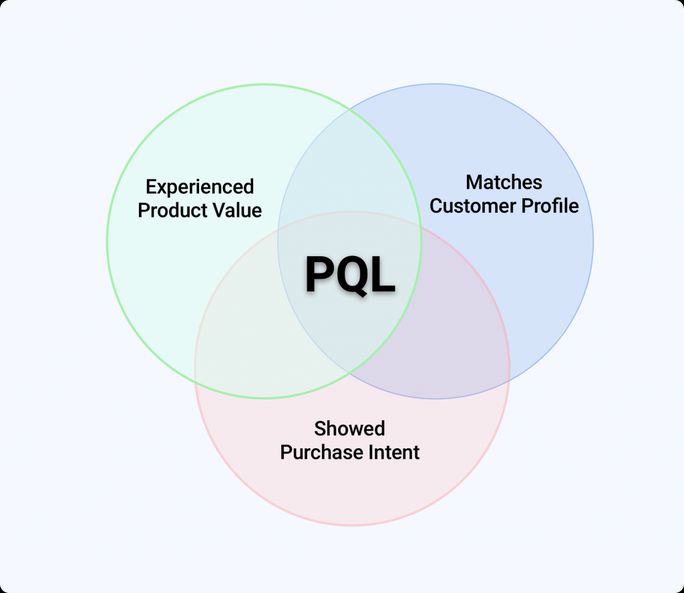
PQL represents the customer who has tried your product/service and shown interest in becoming a customer.
This is particularly useful in the case of startups who are trying to win new customers and employing this technique can do the trick often.
36. Marketing Qualified Lead (MQL)
From a marketer’s perspective, an MQL is a lead who has a higher ability to be a customer than others.
Once an MQL is identified, the marketing team maximizes its efforts to draw them towards the business.
37. Sales Qualified Lead (SQL)
The MQL is approved by the marketing team alone. Once the sales team agrees that the concerned lead can become a prospective client, then the MQL converts to SQL.
Thereby, the sales team also puts in their efforts to convert the SQL to a permanent customer.
38. Conversation Qualified Lead (CQL)
A Conversational Qualified Lead is the one who has engaged in active conversation with the sales team or a chatbot and expressed their interest in becoming a customer. So, they are the direct result of conversational marketing.
39. Multi-Touch Revenue Attribution
If you want to determine the value that each customer touchpoint brings to conversions, how would you do it? This is what brought about multi-touch revenue attribution.
It’s quite a broad concept, but in short, this basic marketing term means evaluating multiple marketing campaigns to understand which channels brought about the most conversions.
This can help businesses figure out future budget allocations for specific marketing campaigns that work better than the others.
40. Product-Market Fit
Entrepreneur & investor Marc Andreesen developed the concept of product-market fit. It simply means finding the right market for the product according to its attributes to drive the sales.
This is important for businesses looking for investors as venture capitalists are inclined to invest in a business only after looking at the product-market fit.
41. Product-Led Growth (PLG)
This basic marketing term discusses a business tactic that relies upon products primarily for user acquisition, expansion, conversion, and retention.
The strategy involves making a limited version of a product freely accessible to the customer first followed by enforcing paywalls once the true value has been delivered to the users. Mobile apps often use this strategy.
42. Website Conversion Rate
Conversion rate refers to the ratio between the number of people visiting a website and the number of people who actually perform the desired action.
The desired action may include buying a product/service, subscribing to the site, or pressing any other CTA button.
43. Wireframes
A wireframe is a two-dimensional illustration of an app’s interface that acts as a guide for developers while they are building the app.
It specifically focuses on space allocation, available functionalities, intended behaviors, and content prioritization.
44. Web Content Outlines
It is the most basic version of a web page, lacking the final touches and precision. This page does show the outline of the final page sans the design.
However, web content outlines include the SEO metadata, page title, and the page location within the site architecture.
45. Information Architecture
Before a website is developed, the content related to it has to be organized. This is what refers to information architecture.
It includes everything from planning the website’s navigation, auditing existing URLs, determining the site’s design, establishing URL structures, etc.
Terms for Types of Marketing
46. Inbound Marketing
Inbound marketing is a key marketing term that involves a customer-centric approach. It is found that inbound marketing practices generate 54% more leads than traditional outbound marketing practices.
It works through extensive marketing tactics like blogging, webinars, search engine optimization, and social media campaigns to attract customers rather than using paid advertising.
47. Email Marketing
We can wax eloquent on the different forms of digital marketing, but where would we be without the oldest and yet the most profitable of them all — email marketing?
Time and again, email marketing has delivered over 40 times the ROI on every dollar spent. The simplest form of digital messaging has today turned into the mouthpiece that every brand relies on.
What started out as bulk email through proxy servers has now given way to full service email marketing providers that completely automate your workflow with audience segmentation, list building, dynamic content, design templates, A/B testing, drip marketing, and trigger, or time-based follow-ups.
48. Product Marketing
This basic marketing term comprises the following:
- Deciding the product position
- Launching the product
- Ensuring that the sales & marketing team along with the potential buyers are educated about it
Product marketing concentrates on increasing the demand and usage of the product.
49. Go-to-Market (GTM) Strategy
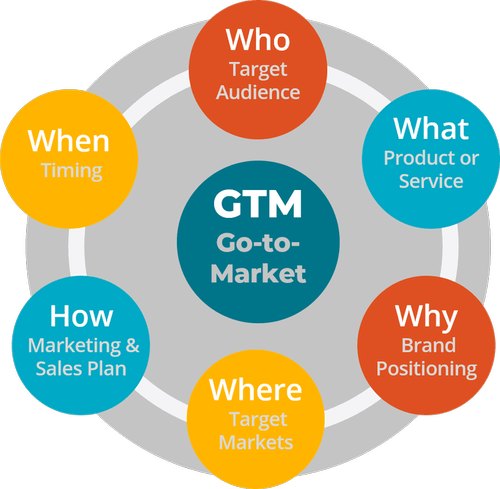
GTM provides a roadmap to introduce a product into the market strategically so that it can acquire its product-market fit. This marketing strategy suits the requirements of both B2B and B2C businesses.
50. Account-Based Marketing (ABM)
Account-based marketing (ABM) is a B2B marketing approach that focuses on finding unique techniques to engaging target customers rather than working on buyer personas.
As per SiriusDecisions, about 92% of B2B marketers believe that ABM plays an effective role in customer acquisition.
51. Growth Marketing
Currently, all data-driven approaches are soaring high in every front of a business. Growth marketing is also a data-driven approach used to determine the way to optimize various results.
Growth marketers are responsible for determining areas to test and improve various scenarios, conduct hypothetical experiments and analyze results afterward.
52. Affinity Marketing
You must have heard of affiliate marketing but what is affinity marketing? It’s basically pretty close to the previous but here the difference is that two brands promote each other’s products instead of just one brand doing so.
Also called co-branding, affinity marketing lets your partner with another brand where you get to show your business’s offerings to their customers and hence gain new customers for your brand.
Terms to Watch in the Future
53. Flywheel
A relatively newer marketing term, which was introduced in 2018, flywheel represents the concept of doing repeat business with customers through relationship building and consumer engagement.
Customers occupy the centre stage when describing this concept because this is how marketers think B2B businesses are more progressive compared to B2C businesses.
54. Advertainment
This one is pretty self-explanatory. It means advertising which overlaps the traditional entertainment methods and combines the two to lure the users. Here the ads could very well look like a movie, or a music video or TV show even.
Marketing strategists believe the trend although is not new per say but is sure to catch up more in the coming years as marketers seek newer opportunities to entice the audiences and grab their attention.
55. Freemium
This term indicates a type of pricing structure wherein companies sell their service or plan of their product absolutely free for a limited period after which the user has to pay to unlock or use more features.
It’s a very effective marketing approach as most users develop a sense of confidence using a product and have enough time to decide whether they’d like to continue using it or not. And most importantly is the product worth paying for or not.
56. Ephemeral Content
As the name suggests this is the type of content that is transient in nature and is only intended to stay for a certain time after which it disappears. The short-lived content is used manjoly for time-sensitive coupons or promo codes or even GIFs or videos.
Ephemeral content is a type of FOMO marketing technique which creates a sense of urgency in the user and hence forces them to take an action instantly.
57. Geofencing
Also known as proximity marketing, this form of marketing uses GPS technology to communicate with the user. You could send SMS, emails or notifications to your customers when they are in a particular location or area.
You must have noticed that Google generally asks you to review a place you’ve been to – that is an example of geofencing. The reviews subsequently help businesses and their services.
Conclusion
Marketing is a dynamic and constantly evolving field. New marketers often struggle with new terminologies that they may not have heard of.
But with this article, you must have understood a great deal after going through the extensive list of marketing terms.
Marketing is an ever-growing domain wherein you need help at many levels. Luckily, present-day marketers like you have a string of tools to aid you in your marketing journey.
One such tool being SocialPilot which can make your social media marketing and management a breeze. With its help you can schedule, publish and analyze posts, create reports, curate content and much more.
Go ahead, try its free trial to know more.

